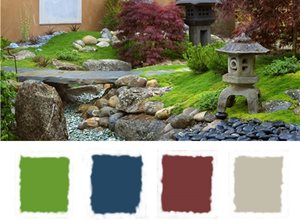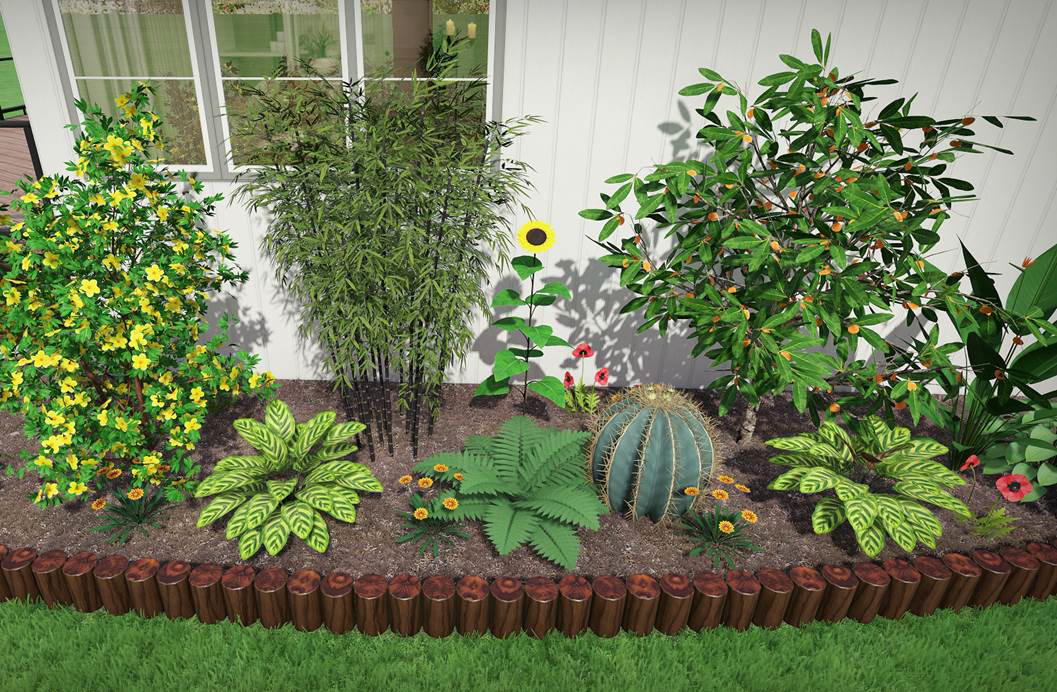The Greatest Guide To Landscapers
Table of Contents9 Simple Techniques For LandscapersThe Greatest Guide To LandscapersLandscapers for BeginnersThings about LandscapersFacts About Landscapers RevealedThe Single Strategy To Use For Landscapers
- A garden feature where water is stood for by an accumulated stone product, normally a crushed rock or granite. These are most commonly found in contemporary and Japanese garden style.- A stone or natural flagstone patio area, course, or pathway constructed without a concrete base. The base would certainly be compressed gravel and the joints would certainly be an aggregate or walkable ground cover. - A rock retaining or cost-free standing wall built without the use of mortar. - A below ground structure that accumulate water and allows it to reduce percolate right into the dirt around it.
Landscape design that is compatible with a websites' environment in both look and sustainability without adverse effects to the setting. Interrupting the landscape is a line of separation that creates aesthetic passion in the garden by dividing one sector from an additional segment. This can be visual or functional, keeping one aspect (such as pea gravel) from obtaining mixed into an additional (like bark dirt).
Areas can additionally sense of "room" provided by trees, other plantings, fencings, or screens. The landscape near the entrance to a structure. A tree, hedge or vine, educated to expand on a wall or fence into a particular pattern. Especially helpful for fruit trees, making it simple to collect the fruit and consisting of mess.
The Only Guide to Landscapers

The element in a landscape layout or location in a landscape that is implied to be most prominent. The focal point can be a plant, rock, sculpture, gathering area, or other landscape function.

The 15-Second Trick For Landscapers
Rock item, either rounded or fractured, that is fairly tiny- typically 1" or much less. Low plants that are allowed or encouraged to spread over a location. Can refer to any type of "difficult" garden components consisting of statuary or rocks yet the majority of commonly is made use of to refer to courses, patio areas, and walls.: Elevation difference between the level of water in a pond (or the degree of the pump if it rests outside the pond) and the upper outlet of water which impacts efficiency of the water pump in gph (gallons per hour). Thick shrubs or trees that form a fencing, display, or limit.
Fence boards that run flat, usually made use of in modern-day or Japanese-inspired landscape styles. Proper use of fictional lines can help the landscape really feel linked to the home and various other elements.
An even more kicked back garden controlled by rounded as opposed to straight bed lines and a less inflexible framework. Conventional PNW landscapes are casual. A plant that spreads even more than wanted, or into environments where it does damage. Portland has a checklist of invasive plants that need to not be installed in landscapes since they can infect forests or rivers and be challenging to our website regulate.
All About Landscapers
Can consist of head placements and protection, pipe sizing, GPM specifications, and products needed to install this system. Accredited specialist that creates landscapes, educated in design and design as well as in horticulture.
The professional who intends and establishes landscape projects, usually at a residential or small industrial level with the significant style incentive on growings. Landscape designers usually have less education than Landscape Architects and are not licensed. A completed landscape design, describing all aspects for the new landscape. This normally takes the kind of a drawing theoretically.
Calcium material made use of to increase the pH in dirt, which will make it much less hospitable to moss (Landscapers). A water tight HDPE product used below ponds, streams and waterfalls in water functions. Making use of numerous growings of the exact same selection to complete an area in the landscape. This can decrease maintenance and water usage in the garden.
A mix of concrete, sand, and water that is utilized in stone masonry for setting stones and joints. A layer of garden compost or bark dust used at the base of a plant. A mass growing of moss. A plant that existed in a geographic place before individuals started changing the landscape.
Not known Details About Landscapers
How the garden or a yard element is organized in connection to an existing or new feature or to an instructions. Preserving a yard without the use of chemical herbicides, pesticides, or plant foods. Yards that are not mowed but expanded in landscapes as perennials. This is a partly open sided relaxation or recreation area that adjoins a dwelling, made use of for enjoyable, outside dining see here and just delighting in the outdoor setting.

Plants that supply seasonal rate of interest and after that die back in the winter. Cold season lawn that is the most usual turf grass in Portland, OR and the remainder of the PNW.An open roofed structure over an outdoor patio or various other landscape feature.
Basalt aggregate varying in dimension from 1/4" down to dust. The most typical landscape gravel in the PNW. Location of the landscape made to deal with rain water till it can soak into the ground. A chain that find out here now manages water as it takes a trip from a roof rain gutter to the ground. Yard structure that creates a planting area that is included and more than the surrounding quality.
Structure made from wood, concrete, paving stones, blocks or other materials for stabilizing slopes and stopping too much disintegration. Slim watercourse. Creating a yard function being composed mostly of rocks with growings that match and can flourish in the rocky environment. Lawn sprinkler head design that turns a stream of water across a location.
The Best Guide To Landscapers
